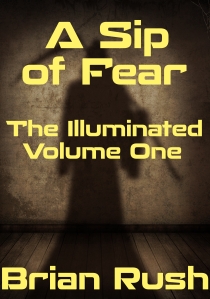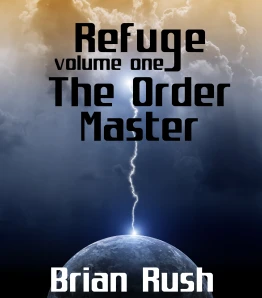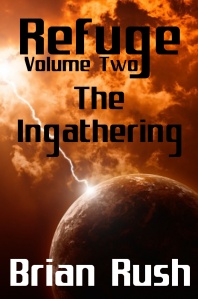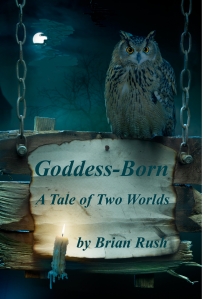 Continuing with the examination of fantasy tropes, especially those in contemporary fantasy, I’ll now deal with that second horror genre crossover to non-horror fantasy, the werewolf.
Continuing with the examination of fantasy tropes, especially those in contemporary fantasy, I’ll now deal with that second horror genre crossover to non-horror fantasy, the werewolf.
Werewolves are, in most cases, human beings that can — and often must — transform into animals, typically wolves. As such, they are a blend of the human and the animal. In many werewolf stories, the transformation is treated as a curse. The werewolf lives something approximating a normal life except on the night of the full moon, when the curse seizes control, turns the human into a super-powered wolf, and causes him or her to lose all control and go on a killing rampage. In other stories, the cursed side of the werewolf nature gets downplayed or doesn’t exist, the werewolf can change form at any time, and retains control of his own behavior while transformed. Usually, the werewolf experiences some aspects of the animal nature even in human form. He may have heightened senses, anger issues, or wolf-like behaviors intruding onto human patterns.
Lycanthropy, like vampirism, is communicable, although the exact mechanism varies. Most commonly, a human victim who survives a werewolf attack becomes infected with the curse. Sometimes another mechanism applies. (In The Vampire Diaries, lycanthropy was hereditary with the curse being triggered if the proto-werewolf killed anyone, deliberately or accidentally.) One way or another, though, a human being faces the possibility of becoming a werewolf, usually to the extent he interacts with existing werewolves.
In many stories, antipathy exists between werewolves and vampires. It’s generally agreed that werewolves are more dangerous than vampires on the full moon; usually, on other nights of the month, the reverse is true.
Werewolves sometimes, but not always, run in packs, with their human lives exhibiting a mix of human and wolf instincts and natures, with the wolf nature taking over completely when they assume that form, whether voluntarily or involuntarily.
And that’s enough to begin with. What I want to do now is consider the mythic ramifications of the werewolf in fiction.
Animal Magnetism
Let’s start with the obvious. Werewolves are an invocation of the primitive, the pre-human, the animal. Although werewolf legends go back at least to classical Greece, if not earlier, the werewolf as a staple of fantasy fiction is modern, and even folkloric fear of werewolves dates only to the 17th century in Europe. Since the invention of the printing press, change in culture has been accelerating and today we live in a largely artificial world, removed from anything appropriate to our animal instincts — by which I mean our human instincts, not those of some other animal.
An old song by the Police calls us “spirits in the material world,” but it is more accurate to say that we are animals in the civilized world, experiencing internal conflict between what our genes tell us to do and what our reason sees as appropriate behavior. The werewolf is an atavistic throwback, an image of ourselves as primal, vital creatures removed from our natural habitat and inserted into a strange environment.
This makes sense of the werewolf-vampire antipathy. The vampire isn’t animal but diabolical, a perversion of the human, an opposite pole of our nature to the werewolf.
We’re becoming more accustomed to civilized life, and better adapted to it, as time and generations go by, but we’re still not quite there. The werewolf speaks to a part of ourselves that feels more at home in the wilderness, in small groups living a primitive lifestyle. It’s a trope very well suited to contemporary fantasy, and that helps explain why it appears more in modern-day settings than in ancient or Medieval ones.
The Pack
The social element in the werewolf doesn’t always show up in fiction. Plenty of werewolf stories, especially the older ones, feature lone wolves or cursed individuals who, as far as they know, are the only ones of their kind alive. This can happen for instance when the werewolf victim survives by virtue of killing the werewolf who attacked him.
A different type of story emerges when the storyteller deals with pack dynamics, though, and both wolves and humans are social animals, so including other werewolves in a tightly knit society makes sense. When the werewolf runs in a pack, an opportunity emerges to contrast the werewolf society in its authority structure, ethics, and general approach to life with that of the city-dwellers.
The Curse
The werewolf as a cursed person also relates to the primitive versus modern and animal versus human conflict that defines the werewolf in all its aspects. The beast within is unsuited to life in a modern world. The werewolf on the full moon night is likely to become a murderer, and even to slaughter the very people that he most cherishes and wants preserve when in human form.
This dichotomy often makes werewolves leave civilized life and live in the wilderness, pursuing a simple existence close to the earth. In the wilds, the hunting is good, and the chance to murder people is minimized.
The curse makes the werewolf a tragic figure. In the end, that’s what manifesting a primitive nature in the modern world amounts to.
Copyright: ibreaker213 / 123RF Stock Photo








